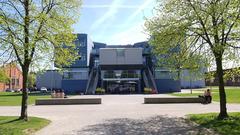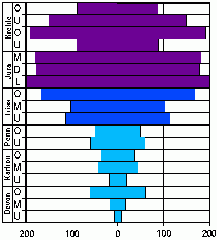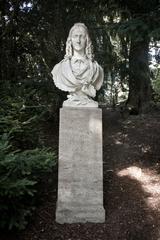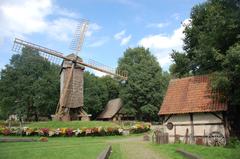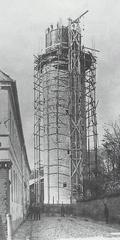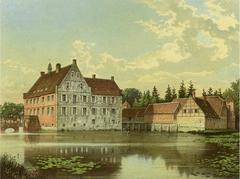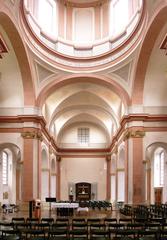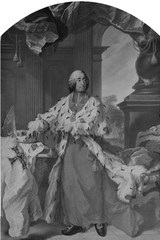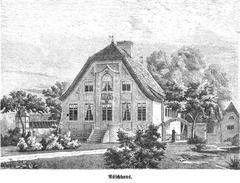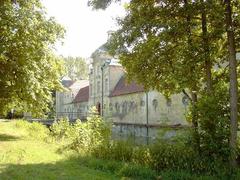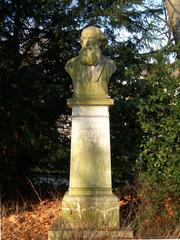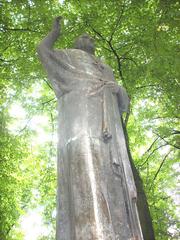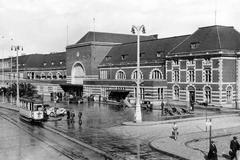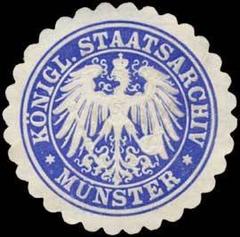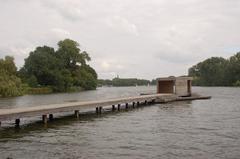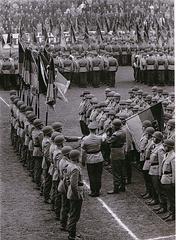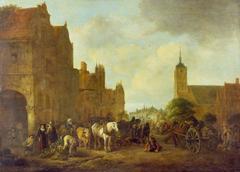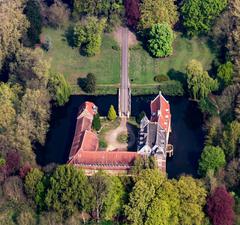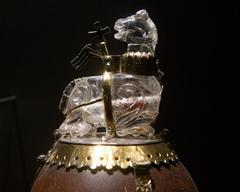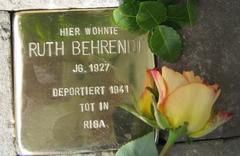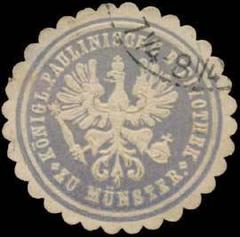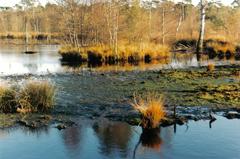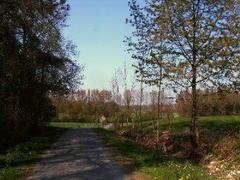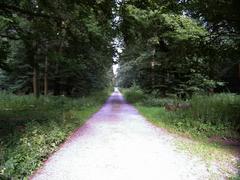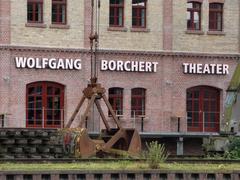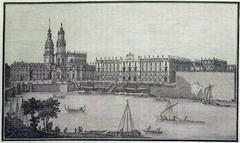Comprehensive Guide to Visiting Bockholter Berge, Münster, Germany
Date: 20/07/2024
Introduction
Nestled in the picturesque landscape of Münster, Germany, Bockholter Berge stands as a testament to the region’s rich historical and natural heritage. Spanning across centuries, from its geological formations dating back to the last Ice Age to its strategic medieval fortifications, Bockholter Berge has evolved into a cherished natural reserve. This guide aims to provide a comprehensive overview of what makes Bockholter Berge a must-visit destination, covering its intriguing history, modern-day significance, and practical visitor information.
The Bockholter Berge’s unique geological features, shaped by glacial movements approximately 10,000 years ago, have drawn the attention of geologists and historians alike (Geological Survey of Germany). During the medieval period, its elevated terrain made it a strategic location for fortifications, playing a crucial role in regional defense (Medieval History Journal). The area also boasts a rich agricultural history, with advanced farming techniques introduced by monastic orders in the 16th and 17th centuries significantly boosting productivity (Agricultural History Review).
The industrial era brought significant changes to the Bockholter Berge, including logging and mining activities, which led to environmental degradation. However, conservation efforts in the early 20th century transformed the area into a protected natural reserve, balancing ecological preservation with sustainable land use (German Federal Agency for Nature Conservation). Today, Bockholter Berge is a popular destination for tourists and nature enthusiasts, offering a range of recreational activities and educational resources that highlight its historical and natural significance (Münster Tourism Board).
Table of Contents
- Introduction
- Historical Background
- Modern-Day Significance
- Visitor Information
- Nearby Attractions
- Special Events and Guided Tours
- FAQ
- Conclusion
Historical Background
Early History and Formation
The Bockholter Berge’s unique geological features, shaped by glacial movements approximately 10,000 years ago, have drawn the attention of geologists and historians alike. These geological features have made the area a point of interest for both geologists and historians (Geological Survey of Germany).
Medieval Significance
During the medieval period, the Bockholter Berge held strategic importance due to its elevated terrain. The hills provided a natural vantage point, making it an ideal location for fortifications and watchtowers. Historical records indicate that several small fortresses and lookout points were established in the area to monitor and defend against potential invasions. These fortifications played a crucial role in the regional defense system (Medieval History Journal).
Agricultural Development
The fertile soil of the Bockholter Berge has been utilized for agricultural purposes for centuries. Historical documents from the 16th and 17th centuries reveal that the area was extensively farmed, with local communities growing a variety of crops, including wheat, barley, and rye. The agricultural practices of the time were heavily influenced by the monastic orders, who introduced advanced farming techniques and crop rotation methods. These innovations significantly boosted agricultural productivity and contributed to the economic prosperity of the region (Agricultural History Review).
Industrial Era and Land Use Changes
The advent of the Industrial Revolution in the 19th century brought significant changes to the Bockholter Berge. The demand for raw materials led to the exploitation of the area’s natural resources, including timber and minerals. Logging activities increased, and several small-scale mining operations were established to extract clay and limestone. These activities had a profound impact on the landscape, leading to deforestation and soil erosion in some parts of the Bockholter Berge (Industrial Archaeology Review).
Conservation Efforts in the 20th Century
By the early 20th century, the environmental degradation caused by industrial activities prompted calls for conservation. Local authorities and environmental organizations began to recognize the ecological and historical significance of the Bockholter Berge. Efforts were made to reforest the area and restore its natural habitats. In 1935, the Bockholter Berge was designated as a protected natural reserve, ensuring the preservation of its unique landscape and biodiversity (German Federal Agency for Nature Conservation).
Modern-Day Significance
Today, the Bockholter Berge is a popular destination for tourists and nature enthusiasts. The area offers a range of recreational activities, including hiking, bird watching, and educational tours. The historical significance of the Bockholter Berge is highlighted through various interpretive trails and information boards that provide insights into the area’s past. These educational resources help visitors appreciate the rich history and natural beauty of the Bockholter Berge, making it a valuable cultural and ecological asset for the Münster region (Münster Tourism Board).
Visitor Information
Visiting Hours and Tickets
Bockholter Berge is open to visitors year-round. Visiting hours may vary depending on the season, so it is advisable to check the official website or contact the Münster Tourism Board for the most up-to-date information. Entrance to the area is generally free, but certain guided tours or special events may require tickets. For more details on ticket prices and availability, please visit the official Münster Tourism Board website.
Travel Tips and Accessibility
Visitors are encouraged to wear comfortable hiking shoes and bring water, especially during the summer months. The terrain can be uneven, so appropriate footwear is essential. The Bockholter Berge is accessible by car, with parking available at designated areas. Public transportation options are also available, with local buses providing convenient access to the site. The area is equipped with well-marked trails and information boards to enhance your visit.
Nearby Attractions
While visiting the Bockholter Berge, consider exploring other historical sites in Münster. The city offers a variety of attractions, including St. Paul’s Cathedral, the Münster Castle, and the LWL Museum of Natural History. These sites provide further insights into the rich cultural and historical heritage of the region.
Special Events and Guided Tours
The Bockholter Berge hosts several special events throughout the year, including guided nature walks, historical tours, and cultural festivals. These events offer unique opportunities to learn more about the area’s history and natural environment. Check the official events calendar for upcoming events and guided tour schedules.
FAQ
Q: What are the visiting hours for Bockholter Berge? A: Visiting hours may vary by season. Please check the official website for the most current information.
Q: How much are tickets to Bockholter Berge? A: Entrance to the area is generally free, but some guided tours or special events may require tickets. Visit the official website for detailed ticket information.
Q: Are there any guided tours available? A: Yes, guided tours are available and offer in-depth insights into the history and natural features of the Bockholter Berge. Check the events calendar for tour schedules.
Q: What nearby attractions can I visit? A: Nearby attractions include St. Paul’s Cathedral, Münster Castle, and the LWL Museum of Natural History.
Conclusion
The historical background of the Bockholter Berge is a tapestry of geological, agricultural, industrial, and cultural developments. From its formation during the Ice Age to its modern-day status as a protected natural reserve, the Bockholter Berge has played a significant role in the history of the Münster region. Its rich heritage and natural beauty continue to draw visitors, making it a cherished landmark that embodies the historical and cultural essence of the area. Plan your visit today to explore the wonders of Bockholter Berge and discover its fascinating past (official Bockholter Berge website).
References
- Geological Survey of Germany, n.d., Geological Survey of Germany
- Medieval History Journal, n.d., Medieval History Journal
- Agricultural History Review, n.d., Agricultural History Review
- Industrial Archaeology Review, n.d., Industrial Archaeology Review
- German Federal Agency for Nature Conservation, n.d., German Federal Agency for Nature Conservation
- Münster Tourism Board, n.d., Münster Tourism Board
